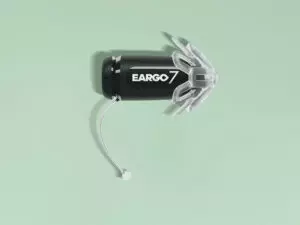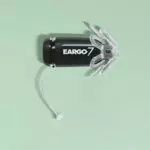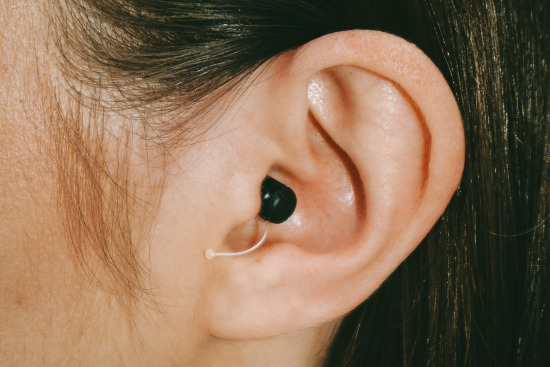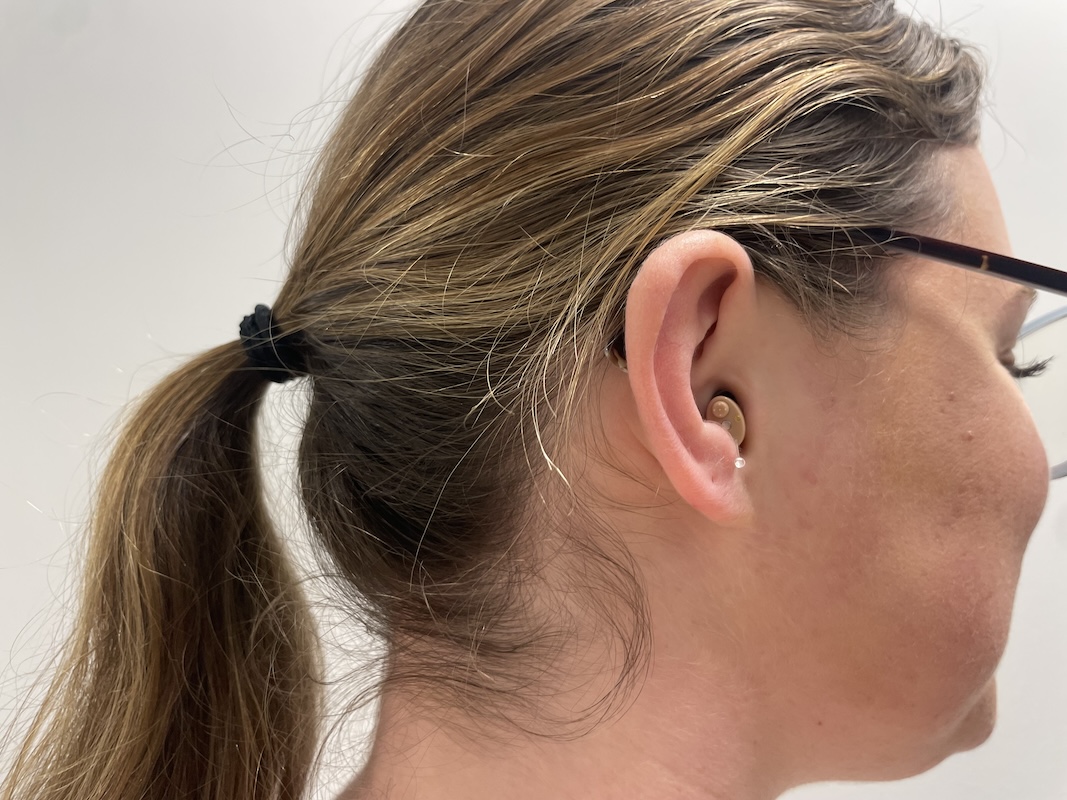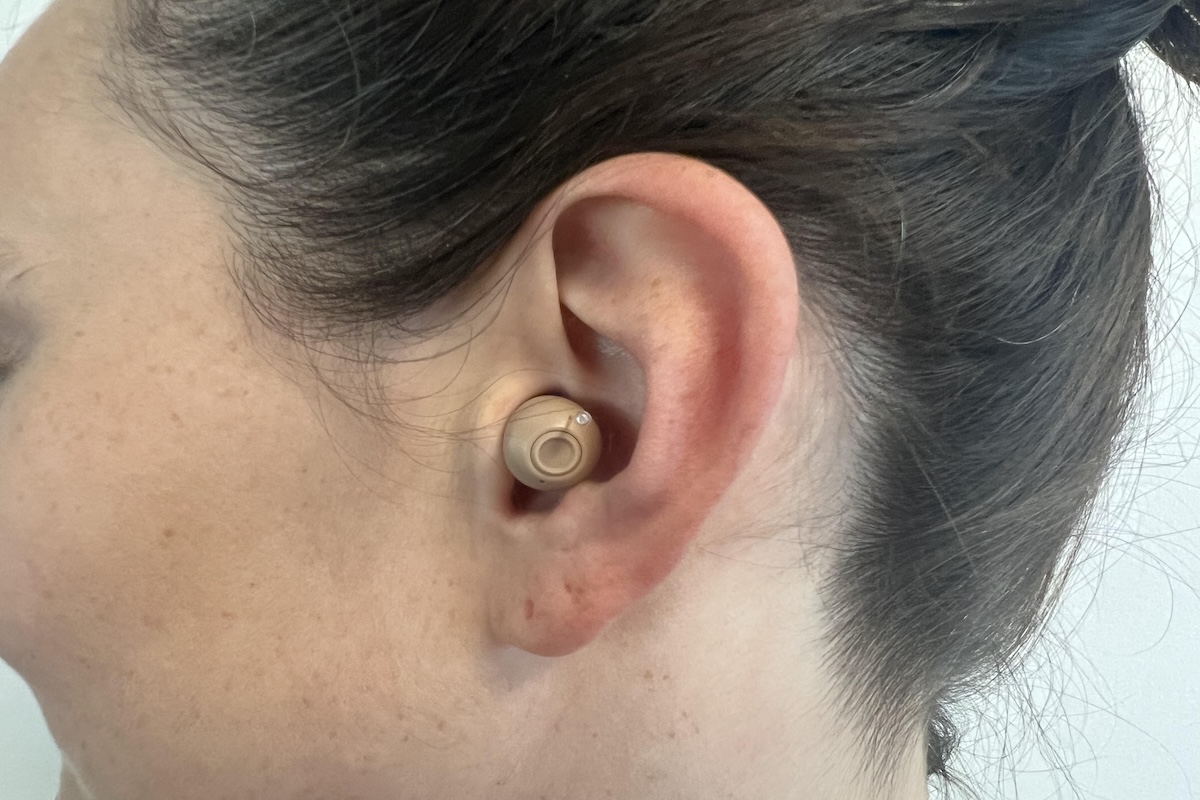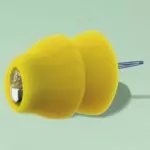Table of Contents
Hearing loss affects around 37.5 million people in the United States. Left untreated, hearing loss can lead to social isolation, depression, and an overall poorer quality of life. Yet only around 16 percent of adults who could benefit from hearing aids use them. Although there are a number of reasons people don’t get hearing aids, one major reason is that some don’t want the perceived social stigma of wearing them.
According to a Handbook Team survey of 600 hearing aid customers, one of the most important factors in deciding which hearing aid model to purchase is how they look in the ear. But invisible hearing aids are a discreet solution that may help if you’re self-conscious about wearing them. Many established brands produce in-the-ear (ITE) or completely-in-canal (CIC) options thanks to their popularity.
We’ve rounded up four of our favorite models so you can decide which one is right for you.
Best OTC Invisible Hearing Aid
The Eargo 7 is our top pick because it’s a comfortable in-the-ear hearing aid with advanced features in an over-the-counter package. The brand offers audiology support through email, chat, and video calls and customization with its different-size petal domes.
Our pick of the best invisible hearing aids
- Eargo 7: Best OTC invisible hearing aids
- MDHearing NEO XS: Best basic invisible hearing aids
- Audien Atom Pro 2: Best budget invisible hearing aids
- Phonak Lyric: Best prescription invisible hearing aids
Our testing experience
With FDA approval, the OTC hearing aid market has experienced rapid growth with an influx of new companies. While this improves accessibility and helps drive down prices, it also muddies the waters. How do you know which products are trustworthy?
By surveying the market, interviewing hearing health experts, and speaking to real hearing aid users, we have curated a list of 21 OTC models to test from nine brands: Audien, Audicus, Eargo, Go Hearing, Jabra Enhance, Lexie, Lucid, MDHearing, and Sony. We’ve chosen these brands because they have positive reputations and represent a range of affordable hearing aid prices, styles, and features.
We also test prescription models from Oticon, Phonak, and Starkey to experience the difference between OTC and Rx (prescription) hearing aids firsthand.
The process looks like this:
Our testers try multiple devices and answer 25 questions about each. We use these answers to look for outstanding performers. For example, the clarity of the Jabra Enhance Select 200 immediately catches our testers’ attention like no other OTC hearing aid.
From our tester
“Jabra Enhance Select 200 has great sound quality for different environments. I can really tell the difference between the listening programs.”
We also look for hearing aids that demonstrate consistent quality in fundamental features, like sound clarity, setup, comfort, and ease of use. Brands that don’t meet those standards don’t make it onto our best-of list.
No brand’s hearing aids perform flawlessly. For example, one of our testers runs into trouble right away with the MDHearing Volt: the Quick Start Guide doesn’t explain how to turn it on.
We also complete onboarding calls with brand audiologists and talk with customer service representatives over the phone and through chat modules to accurately replicate the buying process and evaluate post-purchase support options.
Finally, we continue our testing by interviewing independent audiologists, hearing instrument specialists, mental health experts, and hearing aid users to get additional perspectives on OTC hearing aids.
The case for OTC hearing aids is particularly compelling. Being able to reach a wider population by increasing accessibility, simplifying the ease of fitting, and reducing the cost barriers … opens the gateway to an array of possibilities [previously inaccessible] due to exorbitant costs and lack of insurance coverage.
Shelley Singh, AuD
HelpGuide Handbook for invisible hearing aids
Here are five things you should know about invisible hearing aids:
Compare the best invisible hearing aids
| Price | $2,950 | $397 | $289 | Around $3,000–$6,000 per year |
| Type of hearing aid | In-the-ear (ITE) | Completely-in-canal (CIC) | In-the-ear (ITE) | Completely-in-canal (CIC) |
| Degree of hearing loss | Mild to moderate | Mild to moderate | Mild to moderate | Mild to moderate |
| Battery type | Rechargeable | Rechargeable | Rechargeable | Extended wear |
| Standout feature | Best OTC | Best basic features | Best budget | Best prescription |
Invisible hearing aids reviews
Eargo 7: Best OTC invisible hearing aids
MDHearing NEO XS: Best basic invisible hearing aids
Audien Atom Pro 2: Best budget invisible hearing aids
Phonak Lyric: Best prescription invisible hearing aids
Another prescription hearing aid to consider
Although we haven’t tested the Signia Silk, the Handbook Team is highlighting it as an invisible prescription hearing aid alternative. This completely-in-canal option is a part of Signia’s X platform and treats mild to moderate hearing loss. While it doesn’t offer rechargeability or Bluetooth, the Twin Phone functionality through the app allows you to take a call with one ear and hear the conversation in both hearing aids. Additionally, if you’re not a fan of making volume or program adjustments through your phone, Signia has a remote control you can purchase and use instead.
We’ll update this article with more information as we test more invisible hearing aids.
Frequently asked questions
Pricing for invisible hearing aids varies, ranging from a few hundred dollars to upwards of $6,000 per year for a subscription option like the Phonak Lyric.
The “best” invisible hearing aid for you will depend on your budget, ear shape, level of hearing loss, power needs, and feature preferences. If you’re unsure where to start, we recommend visiting an audiologist or hearing care center in your area.
Invisible hearing aids generally fall under the category of in-the-ear (ITE) styles and sit inside your ear canal with only a small wire barely sticking out for ease of insertion and removal. But there are variations of ITEs, including half-shell and full-shell hearing aids that also fit inside your external ear and are partially visible. The Phonak Lyric is a completely-in-canal (CIC) style, which is inserted deeply inside the ear canal, so it can’t be seen at all.
Given their small size and inability to pack in as much technology, invisible hearing aids have some limitations to consider. For example, they usually don’t have Bluetooth capabilities beyond connection to an app, so you can’t stream sound directly from the devices. The small size also makes them less powerful, so they’re usually not a good option for more severe cases of hearing loss. Additionally, invisible hearing aids do not fit all ear canal shapes and sizes. They can be difficult to handle, especially for those with dexterity limitations. Finally, these hearing aids tend to be expensive and don’t last as long as others (five years versus seven), which might not fit into your budget.
In-the-ear or completely-in-canal styles function by amplifying sounds directly within the ear canal, offering a discreet solution for individuals with hearing loss. These devices utilize advanced digital technology to capture sound, amplify it, and then direct the amplified sound deeper into the ear canal. The main components include a microphone, amplifier, and speaker. Sound enters through the microphone, which converts acoustic signals into electrical signals. The amplifier then increases the strength of these signals, and the speaker (or receiver) converts the amplified electrical signals back into sound waves, delivering them into the ear canal for the user to hear.
Differences between in-the-ear (ITE)/completely-in-canal (CIC) and traditional behind-the-ear (BTE) hearing aids are notable in terms of design, placement, and functionality:
- Design and visibility: ITE and CIC hearing aids sit inside the wearer’s ear canal, making them nearly or entirely invisible to others. BTE hearing aids, on the other hand, rest behind the ear, with a thin tube or wire leading to an earpiece or dome in the ear canal. This design makes BTE aids more visible compared with ITE and CIC models.
- Size and power: Due to their compact size, ITE and CIC hearing aids are less conspicuous but might offer fewer features and less power than BTE models. This makes ITE and CIC aids suitable for mild to moderate hearing loss, while BTE aids can accommodate a wider range of hearing loss, including severe to profound cases, due to the larger size and ability to house more powerful amplification hardware.
- Battery life: Smaller ITE and CIC hearing aids typically have smaller batteries, which may result in shorter battery life compared to the larger batteries used in BTE aids.
- Features: BTE hearing aids often include more advanced features, such as directional microphones, wireless connectivity, and the ability to connect to external devices. Their larger size allows for these features, which may be limited or absent in smaller ITE and CIC models due to space constraints. Invisible hearing aid models may not need directional microphones because they sit within the ear and mimic the natural function of the ear, compared to a larger BTE hearing aid.
- Ease of use: Due to their larger size, BTE hearing aids might be easier to handle and maintain for people with dexterity issues. The smaller components in ITE and CIC hearing aids can be more challenging to manipulate for battery changes or cleaning.
- Quick statistics about hearing, balance, & dizziness. (2024, March 4). NIDCD. Link
- American Academy of Audiology. (2022, May 27). Depression and hearing loss – American Academy of Audiology. Link
- Wallhagen, M. (2009). The stigma of hearing loss. The Gerontologist. 50(1), 66–75. Link
- Research and Markets. (2023). Over-the-counter (OTC) hearing aids market size, market share, application analysis, regional outlook, growth trends, key players, competitive strategies and forecasts- 2023 to 2031. Link




